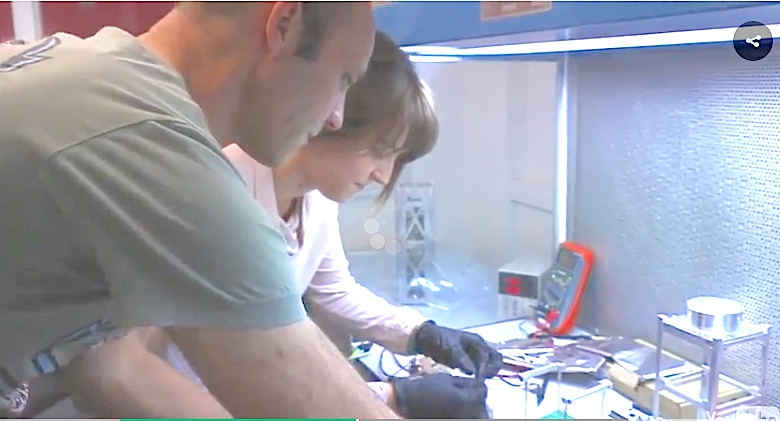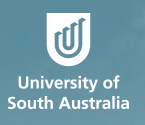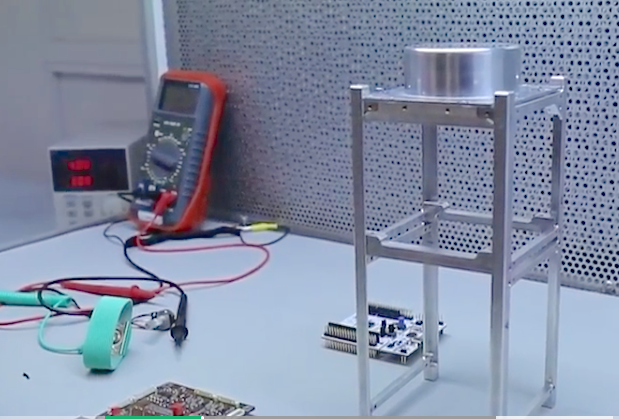

Credit: University of Adelaide
NASA will launch on their Atlas V rocket an Australian nano-satellite into space to study the Earth’s atmosphere, the culmination of four years' hard work by about 50 University of Adelaide students and a dozen staff led by Research Fellow Dr Matthew Tetlow, and are the first Australian-built satellites to be launched for 15 years. The CubeSat sensors will study the density of particles in the upper atmosphere as well as measure for water vapor and oxygen.

The satellite will play a key role in a project to explore the upper reaches of the atmosphere. The program, developed in Australia under the European-funded project QB50, an international network of 50 CubeSats. It is one of 50 different CubeSats from around the world that will be dispersed from the International Space Station next month, in May, to explore the upper reaches of the atmosphere. In October 2016, South Australia and the Agenzia Spaziale Italiana (ASI) agreed to jointly pursue space-related industries.
South Australia has a long history in the space industry, which started when the Woomera Test Range was established in 1947 about 450km north of Adelaide. The outback range is still used and last year launched an experimental rocket flight as part of a joint research program, HIFiRE (Hypersonic International Flight Research Experimentation Program).
"It's a fantastic milestone and a testament to the team. The whole project has been an invaluable and unique experience for the many students who have worked on it. It's not everyday student engineers get to help build a satellite to be launched by NASA. This is incredibly exciting to see our spacecraft launched to the International Space Station and know that it will play an important part in this research," said Dr Tetlow. "The State Government awarded $300,000 through our Premier's Research and Industry Fund towards the development of the satellite, which is one of 50 that will be launched into the lower thermosphere."

Credit: University of Adelaide
The satellite is about the size of a “loaf of bread” and includes a number of sensors to help study the particles of in the thermosphere, a layer of atmosphere stretching between 95km to 500km from the Earth’s surface. This research will be used to better understand Earth’s climate and how the thermosphere affects re-entry of large spacecraft, such as the Space Station.
Project lead Matthew Tetlow said there had not been significant research done on the thermosphere and the University of Adelaide nano-satellite would play a key role in unlocking some of its mysteries.
“With large space stations, they have to bring them down through the atmosphere eventually and when you have something that big it’s important to know exactly where they will land. This hasn’t been studied historically very well,” he said.
“When you talk about nano-satellites you’re talking about Space 2.0 … it’s another opportunity for Australia to develop its space agency and get back into the space race. Normal satellites can be the size of a bus but CubeSats are the size of a loaf of bread—Along with its standardized interface, it will reduce costs from tens of millions of dollars to tens of thousands.”
The project was funded by South Australia Government’s Premier Research and Industry Fund, The Sir Ross and Sir Keith Smith Fund, Inovor Technologies, the University of Adelaide and the University of South Australia, with in-kind support from BAE Systems Australia, Vitech and ITP Engines UK.
The launch will be aired live on NASA TV with a launch window of 12.41am to 1.11am Adelaide time, Wednesday 19 April.
In September, the state’s capital Adelaide will host over 3000 delegates from around the world at the 68th International Astronautical Congress (IAC).
Last week, the Federal Government agreed to advocate for the establishment of an Australian Space Agency based in Canberra, with South Australia as its operational center. South Australian Minister for Defense Martin Hamilton-Smith said the creation of an Australian Space Agency with an operational center in Adelaide would be highly beneficial to the national economy.
“South Australian universities and their students will benefit from increased international R&D partnerships and research opportunities with flow through to STEM activities in our secondary schools. The space industry will provide high value jobs for young South Australians,” he said.
“Similar to the defence industry, the space sector will deliver opportunities for manufacturers to transition to a high technology, high growth sector. Increasing the focus on the space sector with the establishment of a national agency will be a fantastic way to increase Australia’s share and grow our economy.”

